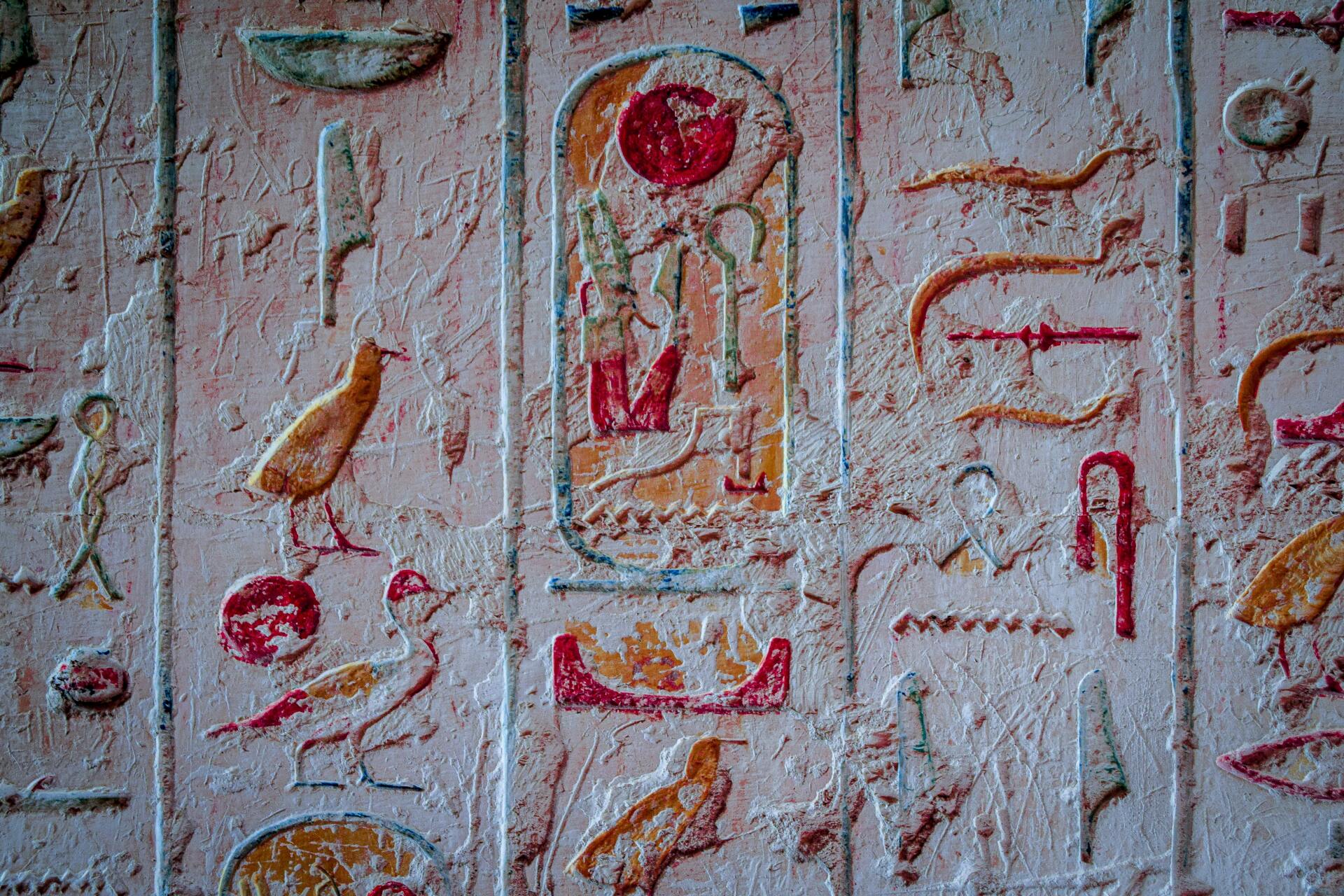SPACE POLICY
Challenges and Opportunities of AI in Outer Space
How AI is enabling new frontiers in Mars exploration.
Linda Jaeck
January 16, 2022
Stephen Hawking once said, that AI will either be the best thing that's ever happened to us, or it will be the worst thing (Hawking, 2017). It is undeniable that the impact of Artificial Intelligence (AI) on the future of technologies has become a topic of high relevance already - also in space. Its extensive development makes AI even more attractive to researchers as its potential provides a variety of opportunities for the space realm.
This article lays out the current challenges and opportunities in Mars exploration and foreshadows what the applications of AI in the space sector could potentially entail. In the past 60 years, AI has become increasingly important in computer science, enabling machines to autonomously perform tasks with simple human intelligence input (Anastassov, 2021). Since then, the term ‘Artificial Intelligence’ has gone through a variety of different interpretations being related to several activities and technologies (Boulanin et al., 2020). It is a highly convergent “general-purpose technology that does not stand alone but enhances or adds functionality” (Verbruggen, 2020, p. 12) when integrated into systems.
Those systems are mostly taught by humans, writing in a set of codes or, in the case of machine learning (ML), are fed into the algorithm and adjusts itself over time (European Space Agency, 2021). Within ML, the specialized deep learning (DL) technique uses multi-layered artificial neutral networks to learn by itself and is often used in spacecraft (ibid.). Especially in Mars exploration, where humans are exposed to extreme conditions, AI is considered an appropriate supplementary tool to perform tasks humans wouldn’t be able to perform.
Recent history of AI and Mars exploration
With the beginning of the 21st century, AI has made a steady progress in Mars exploration, becoming increasingly institutionalized (Liu et al., 2018). The successful implementation of new and innovative tools was long overdue as the space sector had to deal with economic restrictions and increasing criticism, despite all its outstanding achievements (Krichevsky, 2018).
In the following, the author demonstrates the challenges and opportunities AI poses to robotic and human exploration of Mars by means of selected examples. The first ever case of AI being used in space exploration is the Deep Space 1 probe, a technology demonstrator conducting the comet Borrelly and the asteroid 9969 Braille in 1998. The algorithm used during the mission was called Remote Agent (Havelund et al. 2001) and diagnosed failures on-board (Williams & Braddock, 2019). In a similar vein, AI has successfully been used in space rover system software to enhance the communication between the rover and Earth during missions in outer space (Soroka & Kurkova, 2019).
Looking more precisely at the functioning of AI and machine learning, scholars argue that both enable quick decision-making and help satellites to manage these systems without external help from humans. Through the implementation of AI systems these cognitive technologies can enable communication networks to both work more sustainably and efficiently (Soroka & Kurkova, 2019). For instance, the signal between a Mars rover and Earth takes up to 24 minutes to pass during a Mars exploration. To shorten this period, engineers are increasingly taking advantage of space robots, which make decisions autonomously when it comes to collecting and analyzing data and deciding which information should be send back to Earth.
In the case of an autonomous system called Curiosity rover, which NASA sent to Mars in 2016 in order to explore the Gail crater, the AEGIS (Autonomous Exploration for Gathering Increased Science) system was used (Good, 2017). By helping to zap dozens of laser targets on the Red Planet, it inherently changed how Mars is studied. AEGIS was also used as part of the ‘Mars 2020’ mission for autonomous target selection, identifying geological targets in images from the rover’s navigation camera and choosing targets for itself without the permission of Earth (Francis et al, 2017; Good, 2020). This led to a favorable time reduction during the mission as both parties, the robot and Earth did not have to wait for mutual actions.
Challenges and opportunities for Intelligent Autonomy in Mars exploration
Robotic systems have proven to be well suited for repeated tasks in harsh and hazardous environments (Campbell, 2010). Previous studies have shown that with AI, the level of automation can be increased far beyond operational automation in robotics facilitating the performance of Mars exploration (Williams & Braddock, 2019). One major issue, however, is the ability to implement AI reliably for complex tasks in software in space exploration.
This article offers a comparative overview of selected key achievements of AI and Mars exploration, examining the challenges and opportunities of AI in this context. As Campbell (2010) argues, the level of deep intelligence humans perform is difficult to emulate in software. The mismatch between perception has primarily been examined from a deterministic perspective, leading to reactive rather than intelligent behavior in robotics in aerospace. For instance, cooperative unmanned air vehicles (UAV) whose main task is to search and track objects of interests (Campell & Whitacre, 2007) tend to lose track of extreme-target then they move out of sight during missions. To solve this problem, systems like UAV require improved linkage between sensors, perception and planning (Thrun et al. 2005) while the first step should be converting data to information.
Solving connectivity issues of UAV’s is just one out of many challenges, space exploration faces. One great challenge which affects the success and failure of future deep and space exploration missions and Mars expeditions is On-Orbit construction (Biswal & Annavarapum 2021). Potentially volatile circumstances such as the effect of zero gravity on physical health or the exposure to solar flare and solar irradiance expose humans to extremely rough circumstances and therefore make on-orbit assembly challenging for humans. A solution would be AI robots for on-orbit construction to remedy the above challenges. Space entities like NASA or ESA are currently working to ready AI robots for on-orbit constructions in order to assure 100% secure assembly, thereby eliminating physical health problems or the exposure to solar irradiance (Rybus, 2018).
Another major challenge for voyaging astronauts is spaceship management (Biswal & Annavarapum 2021). Due to microgravity and special radiation environment, health issues may arise and could eventually peak in the inability to manage the spacecraft. AI-based automated robots could be the answer to this issue given their robust electronic structure and their potential to minimize [EM1] threats to health on long missions (Chien et al., 2006). AI may be especially useful for long-duration missions to Mars and other places beyond the Earth-Moon system involving a large-scale numbers of crew members, autonomous navigation and communication systems. (Daniela & Dario, 2007). The crew would stay inside the space capsules for many months, potentially kept in a state of artificial hibernation, while not being subject to higher level of radiation. According to NASA’s Glenn Research Center, a ‘cognitive radio’ could be used to transmit space data during the flight. This technology combines cognitive computing and machine learning while handling huge volumes of communication traffic.
Conclusion
As argued above, AI is already playing a key role in assisting with space exploration. Due to the increased length and complexity of future missions, improved handling of management and coordination tasks is required. Systems like AEGIS providing automated targeting essentially contribute to easing processes, as to explore the crater landscape of Mars. With applications ranging from decision-support to navigation in long-duration missions, AI can significantly support human capabilities, such as in on-orbit constructions and secure human health and well-being.
However, despite its potential in handling heavy volumes of sensitive data and contributing to complex tasks, AI should be considered as a means of assisting to missions, as it has not yet reached the desired point of technological maturity. Dynamic joint human-robotic operations will be one of the most arduous problems in Mars exploration. Nonetheless, the next step of digital revolution is just around the corner and AI will be a huge part of it. Critically checking reality and objectively working on interdisciplinary solutions on how to implement AI in the most ethical, solution-oriented way needs to be of uttermost importance in future research on AI in Mars exploration.
References
- Anastassov, A. (2021). Artificial intelligence and its possible use in international nuclear security law. In: Humanities and Social Sciences, 8, 92-103. http://www.papersofbas.eu/images/Papers_2021-1/Anastassov.pdf
- Biswal M, M. K., & Annavarapu, R. N. (2021). Human Mars Exploration and Expedition Challenges. In AIAA Scitech 2021 Forum (p. 0628).
- Boulanin, V., Saalman, L., Topychkanov, P., Su, F. & Carlsson, M. P. (2020). Artifical Intelligence, Strategic Stability and Nuclear Risk. Stockholm International Peace Research Institute (SIPRI).
- Campbell, M.E., and W.W. Whitacre (2007). Cooperative tracking using vision measurements on SeaScan UAVs. IEEE Transactions on Control Systems Technology 15(4): 613–626.
- Campbell, M. (2010). Intelligent Autonomy in Robotic Systems. Bridge, 40(4), 27-34.
- Chien, S., Doyle, R., Davies, A. G., Jonsson, A., & Lorenz, R. (2006). The future of AI in space. IEEE Intelligent Systems, 21(4), 64-69.
- Daniela, G., Dario, I. (2007). Artificial intelligence for space applications, Intelligent Computing Everywhere, 235-253.
- Francis, R., Estlin, T., Doran, G., Johnstone, S., Gaines, D., Verma, V., ... & Bornstein, B. (2017). AEGIS autonomous targeting for ChemCam on Mars Science Laboratory: Deployment and results of initial science team use. Science Robotics, 2(7).
- Havelund, K., Lowry, M., Penix, J. (2001). Formal analysis of a space craft controller using SPIN, IEEE Transactions on Software Engineering 27, 749-765.
- Krichevsky, S. (2018). Super Global Projects and Environmentally Friendly Technologies Used in Space Exploration: Realities and Prospects of the Space Age. Philosophy and Cosmology, Volume 20, 92-105. https://doi.org/10.29202/phil-cosm/20/8
- Liu, J., Kong, X., Xia, F., Bai, X., Wang, L., Qing, Q., & Lee, I. (2018). Artificial intelligence in the 21st century. IEEE Access, 6, 34403-34421.
- Rybus, T. (2018). Obstacle avoidance in space robotics: Review of major challenges and proposed solutions. Progress in Aerospace Sciences, 101, 31-48.
- Soroka, L., & Kurkova, K. (2019). Artificial intelligence and space technologies: legal, ethical and technological issues. Advanced Space Law, 3(1), 131-139.
- Thrun, S., W. Burgard, & Fox, D. (2005). Probabilistic Robotics. Cambridge, Mass.: MIT Press.Wongpiromsarn, T., U. Topcu, & R.M. Murray (2009). Receding Horizon Temporal Logic Planning for Dynamical Systems. http://www.cds.caltech.edu/~utopcu/images/1/10/WTM-cdc0.pdf
- Verbruggen, M. (2020). The extensive role of artificial intelligence in military transformation. In The Impact of Artificial Intelligence on Strategic Stability and Nuclear Risk: Volume III South Asian Perspectives (pp. 11-16). Stockholm International Peace Research Institute (SIPRI).
- Williams, M., & Braddock, M. (2019). AI case studies: potential for human health, space exploration and colonisation and a proposed superimposition of the kubler-ross change curve on the hype cycle. Stud Humana, 8(1), 3-18.
Webpages
- Hawking, S (November 6, 2017). Stephen Hawking says A.I. could be ‘worst event in the history of our civilization’. Accessed: https://www.cnbc.com/2017/11/06/stephen-hawking-ai-could-be-worst-event-in-civilization.html
- European Space Agency (March 3, 2021). Artificial Intelligence in space. Accessed: https://www.esa.int/Enabling_Support/Preparing_for_the_Future/Discovery_and_Preparation/Artificial_intelligence_in_space
- Good, A. (June 21, 2017).
Laser-targeting A.I. Yields More Mars Science. Accessed: https://www.jpl.nasa.gov/news/laser-targeting-ai-yields-more-mars-science
Linda is a graduate student in International Affairs at Hertie School of Governance where she specializes in security. She studied her undergraduate degree in communication with a focus on European foreign policy at the University of Vienna and KU Leuven. She has gained further experience with NGO’s in Austria, Czech Republic and Belgium and worked for the Vice-President of the European Parliament. Linda currently works as a program assistant at the Aspen Institute.
Read More


Watch Our Episodes





